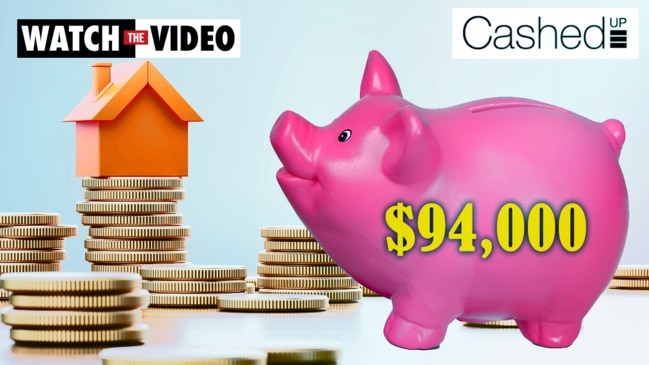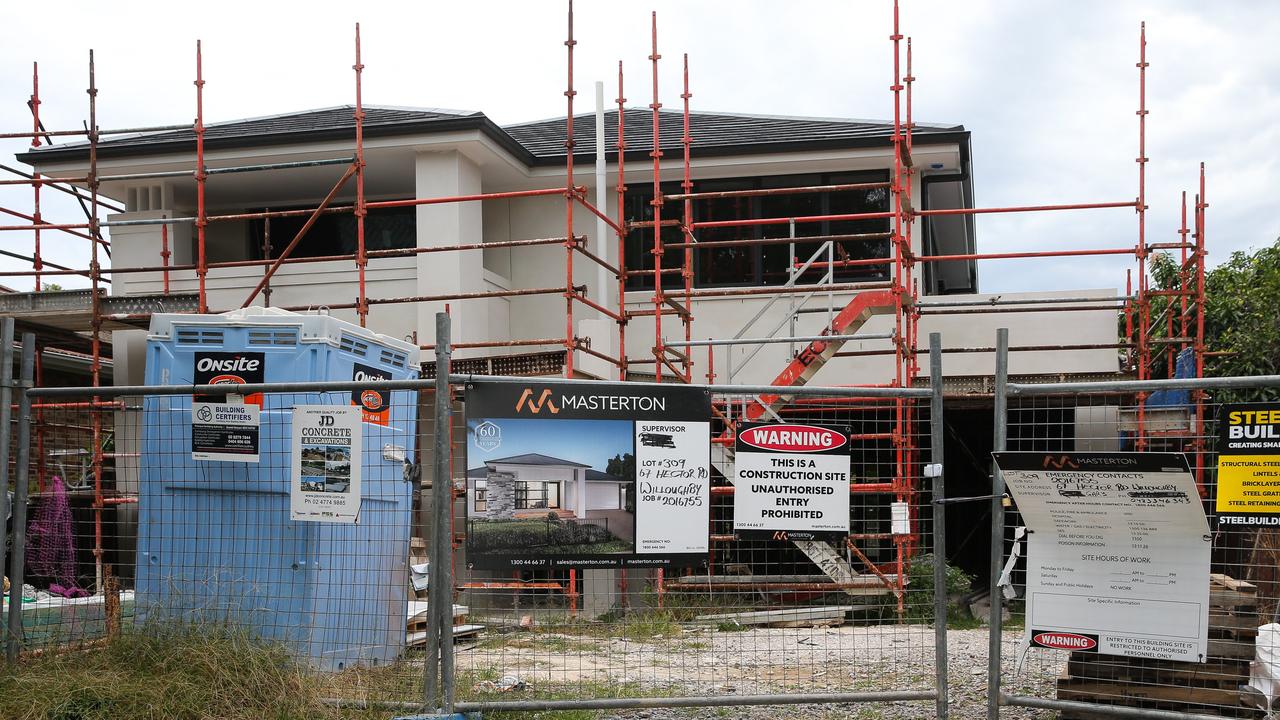Controversial way to save $700 a month on mortgage payments
There’s a way to save a whopping $700 a month on mortgage payments, but it’s not something everyone is willing to do.

Costs
Don't miss out on the headlines from Costs. Followed categories will be added to My News.
ANALYSIS
Off the back of 10 consecutive interest rate rises that have seen mortgage repayments increase at the fastest pace in decades, many Aussie homeowners are feeling the pinch and wondering how to keep up with their rising mortgage payments.
Based on the average NSW loan size of $769,701, monthly mortgage repayments have increased by $1465 in less than a year.
That’s a big number to come to terms with, and coming along with a spike in the cost of living and the fact our real (after inflation) wages are going backwards, the struggle to make ends meet is real.
But there are some tactics you can use to deal with a massive increase in your mortgage repayments.
Move out of your home and rent
This is an option that doesn’t automatically come to mind for many property owners, but moving out of your home and converting it to a rental, then renting another property to live in can often make a big difference to how much your property costs you.
For many homeowners this isn’t an ideal option, but running your property as an investment for most people will be cheaper than running it as your own home.
I’ve unpacked the numbers around living in a property vs. using it as an investment property:
You can see from the figures above, that you’re better off by over $700 per month by renting a property of exactly the same value as your own home. This uplift comes from the fact that when your property is an investment as opposed to your own home, mortgage interest costs and ongoing fees like rates and insurance become tax deductible.
With this strategy, you then have flexibility around how much you want to spend to rent another property to live in. If things are really tight, you could find something really cheap, and in doing this boost your savings capacity short-term until interest rates come back down.
Change to an interest-only mortgage
When you take out a mortgage you have a choice of whether to structure it as a regular ‘principal and interest’ (P&I) loan, or ‘interest only’.
With a P&I loan, each month part of your mortgage payment covers your interest costs, and part reduces the ‘principal’ amount of money you owe. With an interest-only loan, as the name suggests, you only pay interest costs, meaning the amount you owe doesn’t reduce over time.
Having an interest-only mortgage generally isn’t a great long-term strategy, because you’re never actually reducing your debt. But the advantage of interest-only mortgages is that the monthly payments are significantly lower because you’re not having to make the extra principal repayments.
It’s important you’re careful if you go down this path, but given we’re at a point in time where interest rates are close to multi-decade highs, having your loan set up on interest-only for the next year/s can give you some breathing room.

Sell your property
I’m calling out the fact I don’t think this is a good option, but it is an option nonetheless.
If you sell your property, your mortgage payments will disappear and the wild ride will be over. From there you can regroup and confirm your best next steps, but do this without the pressure of dealing with mortgage repayments.
There are two major downsides of this option.
The first is the costs of both selling your property and ultimately repurchasing another. The second is the fact you will be out of the property market once you sell.
Selling a property comes with costs of real estate agents, advertising and legals. These costs typically come in at around 2.5 per cent of the value of your property. Based on the average property price in Australia of $848,706, the average sale costs will be $21,218, which is a serious chunk of change.
Then, when you ultimately get back into the housing market in the future, you’ll need to again pay stamp duty and other costs, generally equating to around 5 per cent of the value of your home. That means the total cost to you will come in at around 7.5 per cent of the value of your property.

Further, if you sell your property it’s fairly safe to assume you’ll be out of the property market for a while. If property values rise over this time, it will mean you have to pay more for the same property in the future, or you can pay the same and get less house for your money.
This option comes with significant costs and downsides, and for that reason in my opinion should only be taken as a last resort.
Cut your spending
This is the simplest of the options – but it’s probably also the most uncomfortable. Finding ways to cut back on your spending in other areas will give you the money to afford your higher mortgage payments.
There are a heap of resources online about frugality hacks you can use to cut your spending, which can in turn give you extra money to fund your higher mortgage repayments.
Keep in mind that the current high interest rates are temporary, and will come back down – it’s just a matter of time – so your discomfort here should be short-lived. I’m generally not a big fan of this tactic, but in the current environment it can help you get through until things get back to a more normal position.
The wrap
It’s tough out there for property owners today, but there are things you can do to make things easier. As much as it seems like times will never change, they will – so you just need a solution to get you through the short-term.
Understand your options and consider their impact, both on the short and long-term. There is no one right answer for everyone, but there is one right answer for you.
Ben Nash is a finance expert commentator, financial adviser and founder of Pivot Wealth. Ben is the creator of the Smart Money Accelerator program that helps people build a second income investing faster, the author of the new book, Replace Your Salary By Investing and the host of the Mo Money podcast.
He also runs regular free online money education events, you can check out all the details and book your place here.
Disclaimer: The information contained in this article is general in nature and does not take into account your personal objectives, financial situation or needs. Therefore, you should consider whether the information is appropriate to your circumstances before acting on it, and where appropriate, seek professional advice from a finance professional.
Originally published as Controversial way to save $700 a month on mortgage payments





